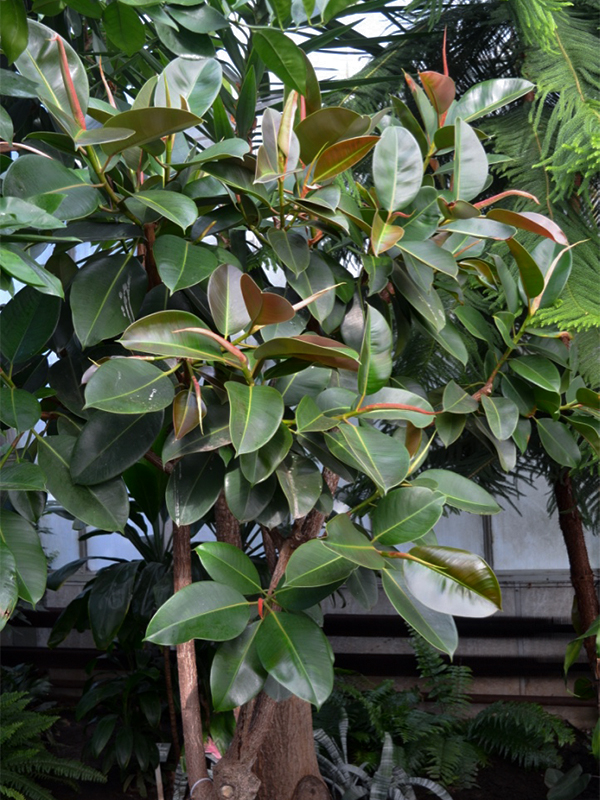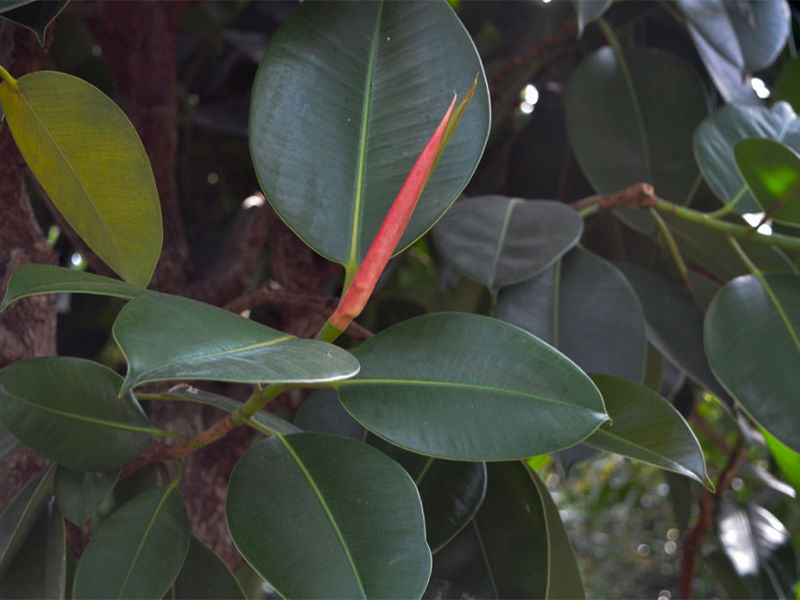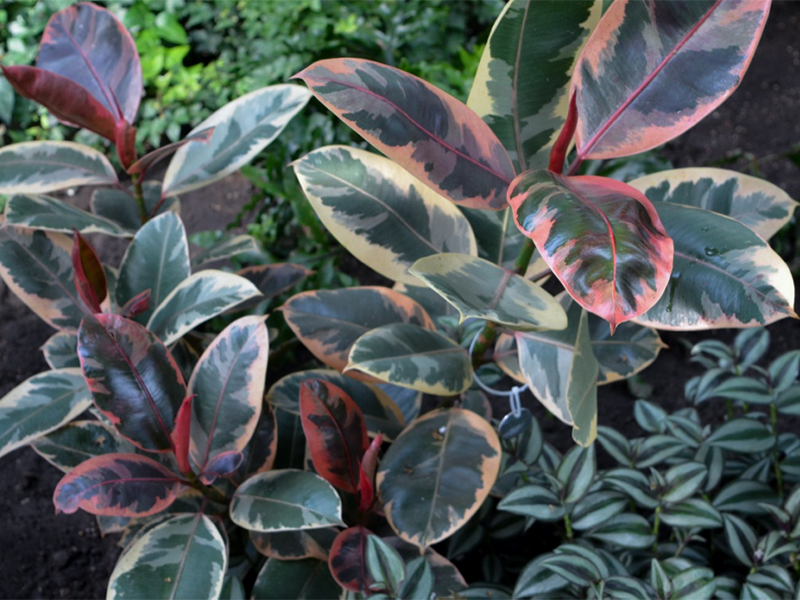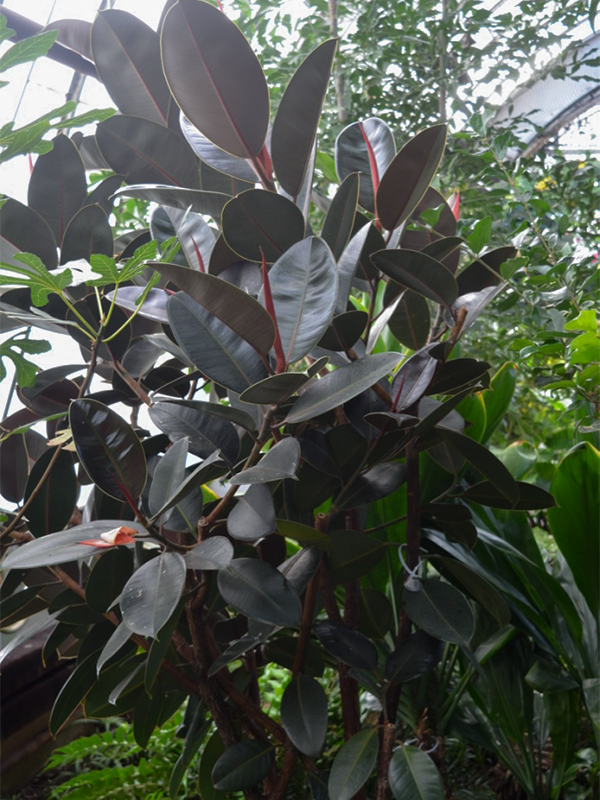
Tropicals > Ficus > Ficus elastica > Ficus elastica
Ficus elastica
Rubber Tree, Rubber Plant, Rubber Bush
Origin: India, Nepal, Myanmar, China, and Malaysia.
| Family |
| Moraceae |
| Genus |
| Ficus |
| Species |
| elastica |
| Category |
| Tropicals |
| Type |
| Tree (evergreen) |
| USDA Hardiness Zone |
| 10b - 11 |
| Canadian Hardiness Zone |
| Requires cold season protection under glass. |
| RHS Hardiness Zone |
| H1c - H2 |
| Temperature (°C) |
| 1 - 10 |
| Temperature (°F) |
| 33.8 - 50 |
| Height |
| 5 - 6 m |
| Spread |
| 1 m |
Photographs
Description and Growing Information
Flowering Period
| Landscape |
| In the landscape, rubbertrees become large wide spreading shade trees. They send down aerial roots that penetrate the soil, become woody and eventually form a trunk. Those grown as interior plants remain a manageable size due to container root restriction. |
| Cultivation |
| Best grown in partial to full shade in organically rich, well-drained soil. Allow soil to dry between watering. |
| Shape |
| Upright and erect. |
| Growth |
| Slow |
| Pests |
| Mealybugs, scale, and mites. |
| Habitat |
| Horticultural origin. |
| Leaf Description |
| Large, thick, oval leaves. |
| Flower Description |
| Non-flowering. |
| Colour Description |
| Leaves are dark green, with newly emerging leaves a striking red. |
| Texture Description |
| Leaves are glossy and leathery. |
| Notable Specimens |
| The Queen Sirikit Botanical Garden, Chang Mai., Thailand. Centennial Conservatory, Thunder Bay, Ontario, Canada. |
| Propagation |
| By cuttings. |
| Ethnobotanical Uses (Disclaimer) |
| Toxic to cats and dogs. |




